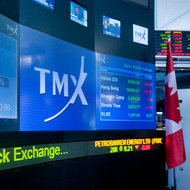But a new commercial from Destination XL, a men’s large-size retailer, takes the unusual approach of featuring chubby men. In the commercial, several men wander in various states of undress in a barren desert, where clothes hang sparingly on a few racks. A bearish naked man, his groin blurred by pixelization, models a pair of gloves triumphantly and says, “Finally, something in my size!”
Another actor wearing a tie but no shirt yells, “Hey, look at Tom, he found an entire outfit.” Tom, however, turns out to be squeezed into an unfortunate ensemble with contrasting plaids.
“Stop shopping in no man’s land,” says a voice-over. “There’s a better way for bigger men to find clothes. Destination XL — big on being better.”
The commercial, by Gotham in New York, part of the Interpublic Group of Companies, will be introduced on Monday. It is directed by Tim Bullock with production, appropriately enough, by Hungry Man. Spending on the campaign, which also includes radio and online advertising, is estimated at $12 million.
The campaign was tested in five markets in the fall, but this is the first national campaign for Destination XL, whose parent company, Destination XL Group, also owns Casual Male XL. The company (which recently changed its name from Casual Male Retail Group) opened the first Destination XL in 2010, and is closing Casual Male XL stores as it opens Destination XL stores in the same markets. The last Casual Male XL is projected to close in 2015.
The new commercial is directed at what the company calls “end of the rack” shoppers with waists from 42 to 46 inches, the high (and sometimes scarce) end of the size range for most stores but the low end for retailers like Destination XL. About 65 percent of men large enough to shop at big-and-tall stores fall in that range, but at Casual Male XL stores, they are only 25 percent of customers, according to David Levin, the chief executive of Destination XL Group.
To appeal to bigger male shoppers, aisles at Destination XL stores are wider and dressing rooms bigger. The stores also aim to be more upscale, with hardwood floors, track lighting, free bottled water, on-site tailors, and televisions tuned to sports and financial programming.
Destination XL stores on average are more than 2.3 times larger than Casual Male XL stores, with more than 3.3 times the selection. Along with moderately priced store brands now available at Casual Male XL, Destination XL features more expensive designers like Tommy Hilfiger, Lacoste, Michael Kors and DKNY Jeans.
“We could have called it ‘Casual Male Superstore,’ but guys would say, ‘That’s where my father shopped,’ ” Mr. Levin said of Destination XL. “So we decided to knock them dead with a new name, without any baggage or preconceived notion of what the store was going to be.”
Gotham, the advertising agency, conducted consumer focus groups in several cities, and ethnographic studies in New York, observing big men who agreed to walk representatives through their closets and to visit mainstream retailers where they tried, sometimes futilely, to assemble complete outfits.
Reid Miller, a group creative director at Gotham, said that while women often discuss shopping experiences, “guys sit in silos and their bad shopping experience is a dirty little secret.”
The dystopian setting of the commercial, which ends with men attired in clothes from Destination XL, is meant to “show guys that you’re not alone in this bad experience,” Mr. Miller said. “We wanted to show them that there is this other band of guys, and to come to Destination XL, where you can join your brethren.”
The pixelized shot of an actor’s crotch has met resistance. ABC, CBS, NBC and Fox all declined to run the commercial, while five cable networks — including Syfy, USA Network and the NFL Network — chose to show it, the company said.
About a dozen cable networks — including Comedy Central, ESPN and the MLB Network — rejected the pixelized ad, but agreed to run a version where the actor wears briefs. (The four major networks were not offered that alternative when they rejected the pixelized version, but the company plans to try placing it with them in the fall.)
Mr. Levin noted that such blurring is common on shows like “The Office” on NBC.
“I’m watching prime-time television and seeing parts pixelated out every day,” he said. “I don’t understand why we’re being called out on this thing — if this were a hunk of a guy, would there be the same problem?”
Bruce Sturgell, 33, the founder of Chubstr.com, a style blog for larger men, said men his size — at 5-foot-11, he fluctuates from 300 to 350 pounds — tend to settle for limited selection at mainstream stores because they are disappointed with the styles at large-size retailers.
“I go to the big-and-tall stores and I find Hawaiian shirts and Sopranos tracksuits,” Mr. Sturgell said.
He has not yet visited a Destination XL, but was impressed with the new commercial.
“They did a good job of channeling the frustration that a lot of big guys” have while shopping, Mr. Sturgell said.
As for casting, “showing guys that are a little more realistic” is laudable, he said. “I want to see what an article of clothing is going to look like on someone who looks like me.”
Article source: http://www.nytimes.com/2013/05/06/business/media/destination-xl-caters-to-plus-size-men.html?partner=rss&emc=rss
